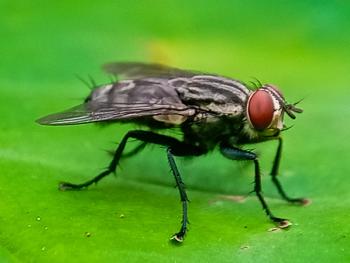
ClinQuiz: Tick particulars
Test your knowledge of ticks and tick-borne diseases with this short quiz.
Figure 1
1) A 2-year-old intact female domestic shorthaired cat from central Arkansas is presented for evaluation of lethargy, anorexia, and dyspnea. The cat is icteric, moderately dehydrated, and febrile (104.3 F [40.2 C]). An examination of a Giemsa-stained blood smear reveals the organisms seen above (arrows). What treatment recommendation will you make?
2) A 5-year-old neutered male Brittany spaniel from Virginia is presented for evaluation and is in lateral recumbency. The dog is alert and responsive but is breathing rapidly and unable to rise. A physical examination reveals an engorged female Dermacentor variabilis tick attached to the dog's left lateral neck, and a diagnosis of tick paralysis is suspected. The tick is removed by using forceps. If the suspected diagnosis is correct, what is the most likely outcome for this dog?
Figure 2
Figure 3
3) A 4-month-old intact male kitten from Pennsylvania that is allowed indoors and outdoors presents with several small, attached ticks around its eyes. The ticks are removed and examined under a microscope, as seen below. What are they?
Susan E. Little, DVM, PhD, DEVPC
This quiz was provided by Susan E. Little, DVM, PhD, DEVPC, Department of Veterinary Pathobiology, Center for Veterinary Health Sciences, Oklahoma State University, Stillwater, OK 74078.
Newsletter
From exam room tips to practice management insights, get trusted veterinary news delivered straight to your inbox—subscribe to dvm360.






